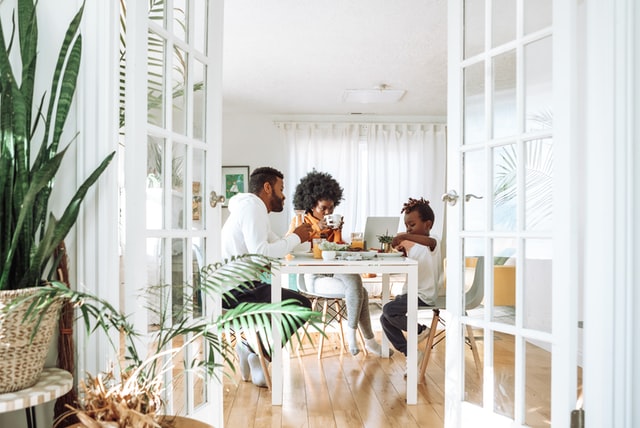Having an unplanned pregnancy can be one of the most frightening events in your life. Perhaps you are struggling with the decision of whether to keep and raise your own child or to place your child in a loving adoptive home. On the one hand, if you keep your child, you have the benefit of raising your child the way you want until adulthood. But if you are unable or unwilling to raise your own child, open adoptions are the next best thing. It is the best of both worlds.
Closed Adoptions
Years past, adoptions were private. All records including name, medical, race, and location were sealed. Not only did a closed adoption meant that the child had no access to medical records but also, they did not have access to family history or cultural heritage. Even after the adoptee turned 18, some of those records were still difficult to find. This was partly because of the stigma of unwed motherhood. Some mothers preferred to keep their information private to protect themselves and their children from an emotionally vulnerable situation.
Here are some concerns that women with unplanned pregnancies have when considering adoption.
- “I will never get to see my child again.”
- “I will miss all of my child’s milestones.”
- “I will not be able to make significant decisions on my child’s behalf.”
- “My child will lose a connection to his or her culture.”
- “I don’t want my child raised by strangers.”
Open adoptions address many of those concerns.
What is an open adoption?
Open Adoption is a term that outlines the relationship between the biological parents and the adoptive family after the adoption. An open adoption contract, also known as a Post-Adoption Communication Agreement, gives clear boundaries, parameters, and expectations to each party keeping in mind the best interest of the child.
How does a Post Adoption Communication Agreement work?
This document is drafted by attorneys, negotiated by both parties, and reviewed by the courts. This legal document may or may not be enforceable depending on what state you live in. It stays in effect until the child turns 18 years of age. Open adoptions should always keep in mind the best interest of the child. Here are some of the elements that are included in each Post-Adoption Communication Agreement.
Who?
Who are the parties that will be involved in open adoptions? It is usually the biological parents and adoptive parents. But sometimes the parents aren’t involved at all, but rather the biological grandparents, uncles, aunts, or cousins. It depends on what the relationship is with the biological parents. It also depends on the status of the biological parents.
What?
What level of contact are the biological parents to have with the child? In other words, will the contact be in person, through social media, by greeting card, or over the phone? Both parties need to make sure they decide on a system that works best for them and the child. For example, a one-hour phone visit when the child is six months old may not work because infants are nonverbal. However, a 15-minute video chat using Zoom or Skype may be more appropriate. Some adoption agencies suggest a standard open adoption agreement that consists of a yearly visit or check-in.
Where?
Where are the visits to take place? For somet families, the best place for these types of visits to take place is in public. Some adoptive families do not feel comfortable having family visits in their home and they want to keep a level of privacy. Don’t be offended. A level of trust needs to be earned before those types of visits take place. However, a restaurant, a park, or a recreational center may be more appropriate. It’s open. It’s neutral. And, remember, it’s all about the child and meeting the child’s needs.
When?
When is the contact supposed to occur? Obviously, after school hours would be best if the child is school-aged. Perhaps weekends would work best for everyone since the child would be off from school and the adults would be off from work. Afternoons would be best especially if the child has to get to bed early. If the child is an infant, you need to consider the child’s nap and feeding times and work around that schedule.
How often?
What frequency is contact supposed to take place? Weekly, monthly, or quarterly? Both parties need to come to a consensus as to how often family visits are to occur. It needs to be something that both parties can live with. Weekly may be a bit ambitious unless it is a kinship adoption. Speak with your adoption professionals about what standard open adoptions look like. Make adjustments from there. It is never too look to re-evaluate your needs and the needs of others in the adoption triad.
Benefits Of Open Adoptions
So, what are the pros of open adoptions for a birth mom? Why would a birth mom want to participate in an open adoption? Well, let me address the concerns above:
- “I will never get to see my child again.” In open adoptions, You get to see your child grow up, right before your eyes. You don’t have to guess what he or she looks like or who he or she looks like more, you can witness that yourself. Not only do you get to experience your child’s upbringing, but they get exposure to you too. They will grow up feeling loved by not only an adoptive family but also a biological family.
- “I will miss all of my child’s milestones.” In an open adoption, you have the possibility of participating in all of your child’s milestones and rites of passage including when they first walk and talk and their first day of school and Kindergarten Graduation. As the child grows into a teen you can also see your adopted child drive for the first time, meet their friends, and see him or her graduate
- “I will not be able to make significant decisions on my child’s behalf.” You may not be involved in decision-making on a day-to-day basis, but the adoptive parents may ask for your opinion occasionally.
- “My child will lose a connection to his or her culture.” This is a valid concern of adoptees involved in a transcultural or transracial adoption. This is when a child of one race or culture is adopted by a family of another race or culture. Connection to one’s culture is very important. Parents play a vital role in helping that child keep that connection. From hairstyles to holidays; from language to family history; to national or ethnic history and heritage, the adoptive parents may ask for your input to bridge the gap of cultural connection that your child needs.
- “I don’t want my child raised by strangers.” Two responses I have to this concern. One, if your child is involved in a kinship or relative adoption, they won’t be raised by strangers. More and more grandmas and grandpas are raising their kids’ kids; that is nothing to be ashamed of. On the other hand, if your child is being raised by a non-relative, over time, they become extended family.
What are some of the obstacles to open adoptions?
Life happens. In an ideal world, an open adoption would last 18 years if the child were adopted at birth, there were no obstacles,and everyone happy and satisfied. But we do not live in a perfect world. Stuff happens. Here is how to make the best of unexpected circumstances.
Relocation out of state
It is inevitable that during that time, someone moves out of state. That makes face-to-face contact difficult, especially if the move is hundreds of miles away. If the post-adoption communication agreement has no provision for a relocation, do your best to work with the adoptive parents to make up for that contact. Zoom and Skype are great alternatives for older kids and teens. Photos and videos on social media may also be a great alternative to face-to-face visits. When adoptive parents move, it’s not because they are trying to keep your child away from you. Sometimes, a job offer is just too good to turn down. Both parties should work to make a long-distance trip to maintain contact.
Children and parents grow apart
Believe it or not, children grow into adolescence. Teens are funny, adventurous, transparent, and very candid. But not all teen years are fun. During adolescence, teens go through such tumultuous changes that you don’t even recognize them from the sweet loving 5-year-old you used to know. They are going through physical, emotional, social, intellectual, and spiritual changes that are unparalleled. This is the time when they have some intriguing feelings. They may ask questions like, “Why didn’t you want me?” Biological moms need to be prepared to answer these questions, as painful as it may be. Answers like, “It’s not that we didn’t want you, but we weren’t able to provide the care that you needed. That’s why we chose your adoptive family”
Conflict
We all think we are correct. We all have opinions. Some people make their opinions known more verbally than others. Conflict is sometimes inevitable. It may be a simple misunderstanding. It may be a personality difference. be differences in discipline. It may be a lack of communication. Whatever it is, be humble, swallow your pride, forgive, and ask for forgiveness. Be teachable and learn to take constructive criticism. Keep in mind, more than anything else, that contact with your child is primarily for your child. You don’t need to be best buddies with the adoptive parents in order to do what is in the best interest of the child. Keep that goal in mind
Breach in contract
A post adoption communication agreement outlines the specifics of contact between the adopted child and his or her biological parents. Depending on the terms of the contract and depending on the laws in your state, an adoptive family may have the right to stop visits, either temporarily or permanently.
Open adoptions are a win-win-win situation.
Adoption allows all members of the adoption triad to fulfill some of their needs. A biological parent can maintain special contact with the adoptive family. The adoptive family can stay in-the-know with the biological family. The adoptee can maintain a connection with the biological family.




